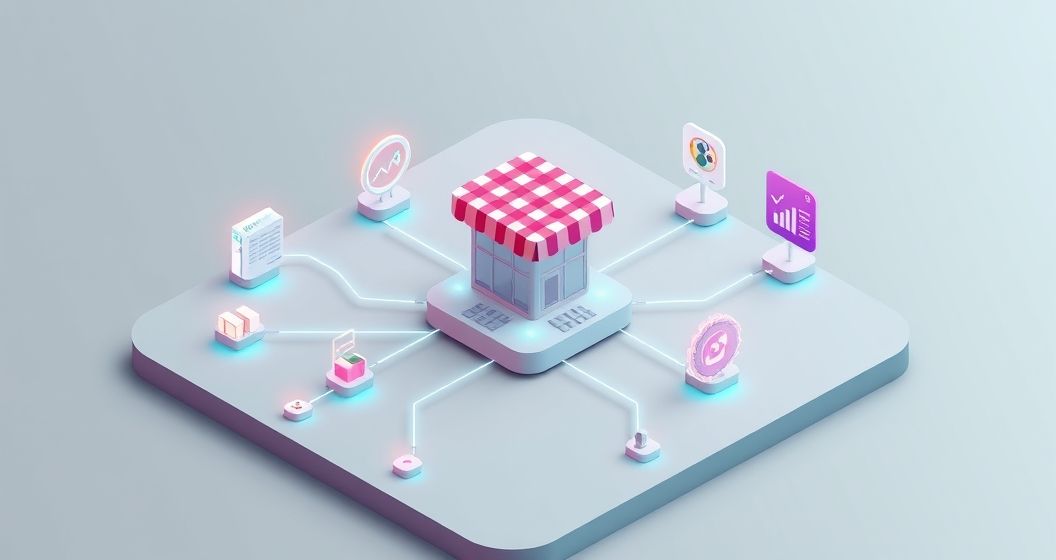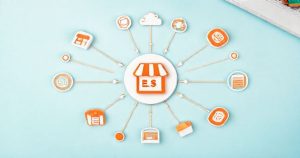Running a successful Etsy shop requires dedication, creativity, and a significant amount of administrative work. As your business grows, managing orders, inventory, marketing, and accounting can become overwhelming. This is where Etsy integrations come into play, serving as powerful tools to automate tasks and connect your shop to other essential business software. By leveraging these connections, you can free up valuable time, reduce errors, and focus on what you do best: creating unique products for your customers.
Understanding the Power of Etsy Integrations
At its core, an Etsy integration is a digital connection that allows your Etsy shop to communicate and share data with another application or platform automatically. Think of it as a bridge that links your store to tools for accounting, marketing, shipping, or even other e-commerce websites. The primary purpose of these integrations is to streamline operations by eliminating the need for manual data entry. This automation not only saves time but also significantly improves accuracy across all your business functions.
For example, instead of manually inputting each sale into your accounting software, an integration can do it for you instantly. Similarly, a print on demand integration can automatically send an order to your production partner the moment a customer makes a purchase. These seamless connections transform your Etsy shop from a standalone island into a well-oiled, interconnected hub. This efficiency is crucial for scaling your business and maintaining a professional workflow without getting bogged down in repetitive tasks.
Key Areas to Enhance with Etsy Integrations
The world of Etsy integrations is vast, covering nearly every aspect of running an online business. By identifying your most time-consuming tasks, you can strategically choose tools that offer the highest return on investment. Focusing on key areas like multichannel sales, fulfillment, and marketing allows you to build a more robust and scalable operation. This strategic approach ensures that you are solving real problems within your business and creating a more manageable workload for yourself.
1. E-commerce Platform Syncing
Many successful Etsy sellers expand their reach by selling on other platforms like Shopify or WooCommerce. Managing inventory and orders across multiple channels can be a logistical nightmare. Etsy integrations that sync with these platforms are a game-changer. They centralize your inventory, so when an item sells on Etsy, the stock level is automatically updated on your Shopify store, and vice versa. This prevents overselling and ensures a consistent customer experience across all your online storefronts.
2. Print on Demand (POD) Automation
For sellers offering custom apparel, mugs, posters, and other printed goods, print on demand (POD) integrations are essential. Services like Printful and Printify connect directly to your Etsy shop. When a customer places an order, the integration automatically forwards the product details and shipping information to the POD provider. They then print, pack, and ship the item directly to your customer. This completely automates the fulfillment process, allowing you to run a product-based business without ever holding physical inventory.
3. Accounting and Financial Management
Bookkeeping is a critical but often tedious part of any business. Etsy integrations with accounting software like QuickBooks, Xero, or Wave automate the entire process. These tools can import your sales data, Etsy fees, shipping costs, and tax information directly into your accounting ledger. This eliminates manual data entry, reduces the risk of human error, and makes tax season significantly less stressful. Having a clear, real-time view of your finances is vital for making informed business decisions and understanding your profitability.
4. Email and Social Media Marketing
Building a brand goes beyond the Etsy marketplace. Integrating your shop with email marketing platforms like Mailchimp or AWeber allows you to capture customer information and build a mailing list. You can then nurture customer relationships with newsletters, special offers, and new product announcements. Likewise, integrations with social media management tools can help you schedule posts and promote your listings across platforms like Pinterest and Instagram, driving external traffic directly to your Etsy shop and growing your brand presence.
5. Shipping and Fulfillment Solutions
As order volume increases, managing shipping can become a full-time job. Shipping integration tools like ShipStation or Pirate Ship import your Etsy orders into a single, streamlined dashboard. From there, you can compare carrier rates, purchase and print shipping labels in bulk, and automatically send tracking information back to your customers through Etsy. This level of automation drastically cuts down on the time spent on fulfillment, ensuring orders go out quickly and accurately, which leads to happier customers and better reviews.
Choosing the Right Integration for Your Shop
With so many options available, selecting the right Etsy integrations can feel daunting. The best approach is to first identify your biggest pain points. Are you spending too much time on shipping? Is your inventory a mess? Start by looking for a solution to your most pressing problem. Research different providers, read user reviews, and pay close attention to pricing models. Many integrations offer free trials, which are a great way to test the software and see if it fits your workflow before committing to a subscription.
It is also important to consider the scalability of the tool. An integration that works for ten orders a day should also be able to handle one hundred. Look for solutions that can grow with your business. Don’t feel pressured to automate everything at once. Start with one or two key integrations that will have the most immediate impact. As your shop grows and your needs evolve, you can continue to add more tools to your ecosystem, creating a customized and highly efficient operational stack.
Conclusion: Building a Smarter, More Efficient Business
Ultimately, Etsy integrations are more than just convenient tools; they are strategic assets for any serious seller. By automating repetitive administrative tasks, you unlock the time and mental energy needed to focus on product development, marketing strategy, and customer engagement. A well-integrated Etsy shop is more accurate, more efficient, and far more scalable than one managed manually. Embracing this technology allows you to build a resilient business that can thrive in a competitive marketplace and provide a superior experience for your customers.





